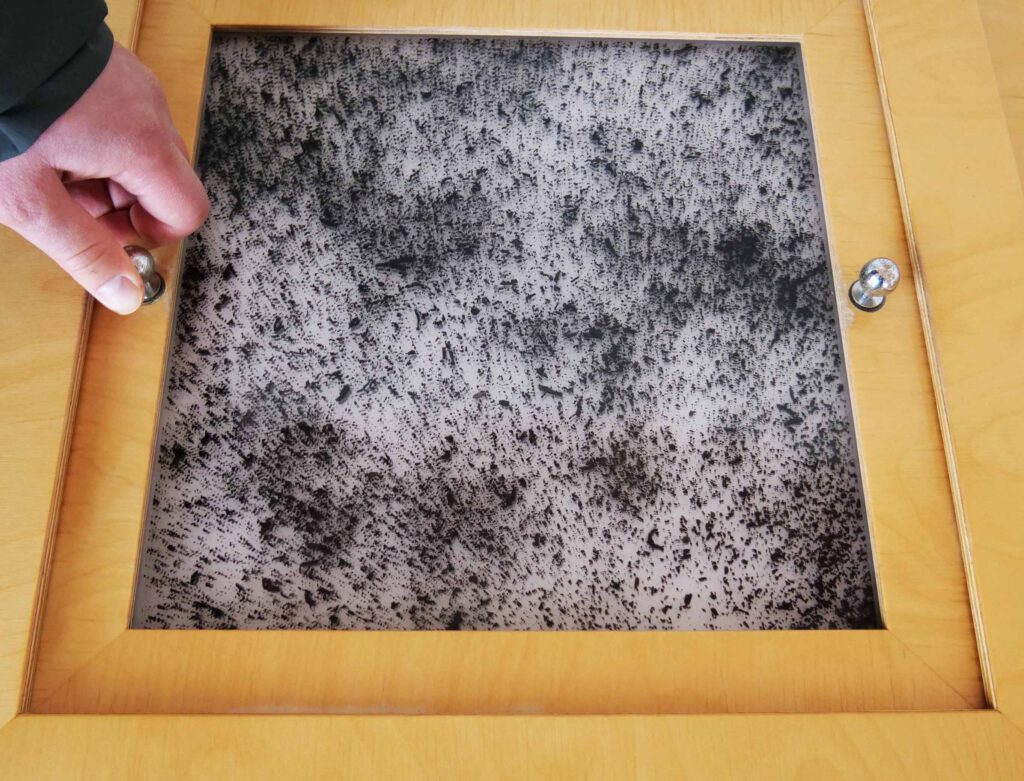Dust circles
The subject of the exhibit “Dust Circles” is an interesting mathematical theorem about plane movements. First of all, you can look at the exhibit: It consists of two transparent plastic plates, each of which has black dust embedded in a congruent manner. The upper of the two is clamped in a wooden frame that can be moved against the lower fixed panel. What can you observe now?
It seems as if circles are involuntarily formed by this displacement — as the name of the exhibit already reveals.



